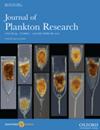了解图片:现场图像数据在浮游生物生态学研究中的前景与挑战
IF 2
3区 环境科学与生态学
Q2 MARINE & FRESHWATER BIOLOGY
引用次数: 0
摘要
浮游生物是所有海洋生态系统的基本组成部分,然而,要以了解浮游生物动态所需的高分辨率对浮游生物进行取样仍然是一项挑战。原位成像工具提供了一种在精细尺度上对浮游生物进行取样的方法。技术和方法的进步使原位成像成为浮游生物生态学的常用工具。尽管原位成像工具潜力巨大,但目前还没有分析相关数据的标准方法。因此,即使是针对类似问题的研究,原位成像数据的分析方法也不一致。这给比较不同研究和采样设备带来了挑战。在本综述中,我们简要总结了原位成像工具在浮游生物生态学中越来越多的应用、潜力和新应用。然后,我们总结了这些研究中常用的分析方法。最后,我们探讨了与原位成像工具独特的取样机制相关的主要统计挑战,并讨论了由于许多原位成像工具的取样量较低而产生的理论不确定性。为了充分发挥原位成像工具在浮游生物生态研究中的作用,研究人员必须仔细考虑如何分析数据。我们提供了处理和分析数据的建议,同时也承认了开发新统计工具的巨大需求。本文章由计算机程序翻译,如有差异,请以英文原文为准。
Understanding the picture: the promise and challenges of in-situ imagery data in the study of plankton ecology
Planktons are a fundamental piece of all ocean ecosystems yet, sampling plankton at the high resolution required to understand their dynamics remains a challenge. In-situ imaging tools offer an approach to sample plankton at fine scales. Advances in technology and methodology provide the ability to make in-situ imaging a common tool in plankton ecology. Despite the massive potential of in-situ imaging tools, there are no standard approaches for analyzing the associated data. Consequently, studies are inconsistent in analyzing in-situ imaging data, even for similar questions. This introduces challenges in comparing across studies and sampling devices. In this review, we briefly summarize the increasing use, potential and novel applications of in-situ imaging tools in plankton ecology. Then, we synthesize the common analyses used across these studies. Finally, we address the major statistical challenges associated with the unique sampling mechanisms of in-situ imaging tools and discuss the theoretical uncertainties, which arise from the low-sampling volumes of many in-situ imaging tools. To fully unlock the power of in-situ imaging tools in plankton ecological studies, researchers must carefully consider how to analyze their data. We provide recommendations for processing and analyzing data while also acknowledging a large need for developing new statistical tool.
求助全文
通过发布文献求助,成功后即可免费获取论文全文。
去求助
来源期刊

Journal of Plankton Research
生物-海洋学
CiteScore
3.50
自引率
9.50%
发文量
65
审稿时长
1 months
期刊介绍:
Journal of Plankton Research publishes innovative papers that significantly advance the field of plankton research, and in particular, our understanding of plankton dynamics.
 求助内容:
求助内容: 应助结果提醒方式:
应助结果提醒方式:


